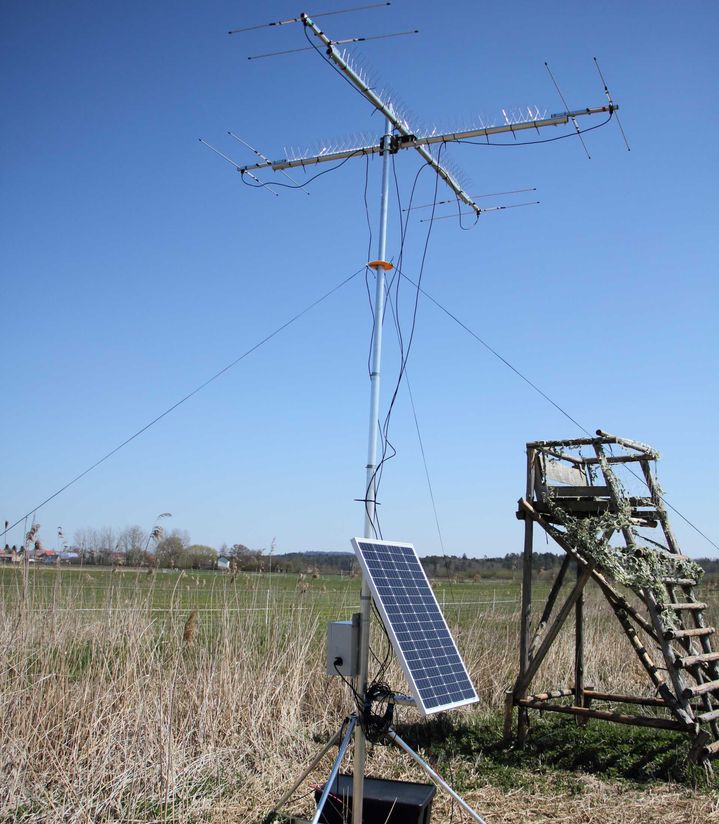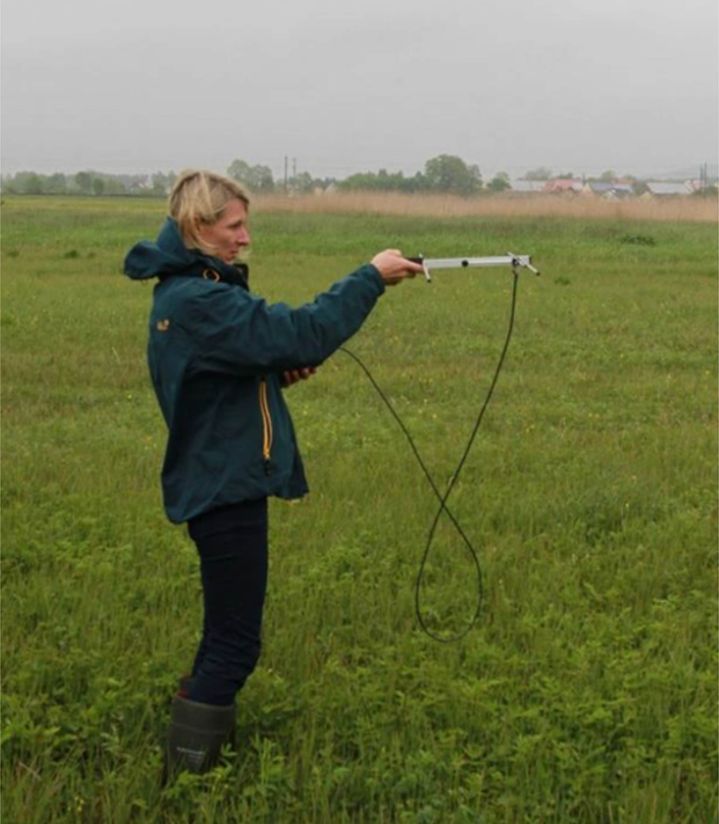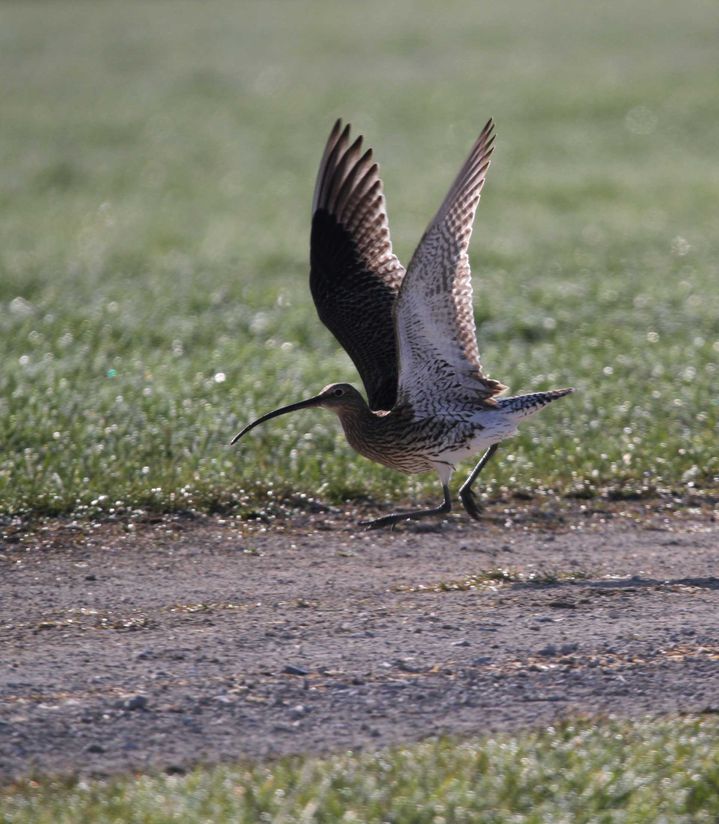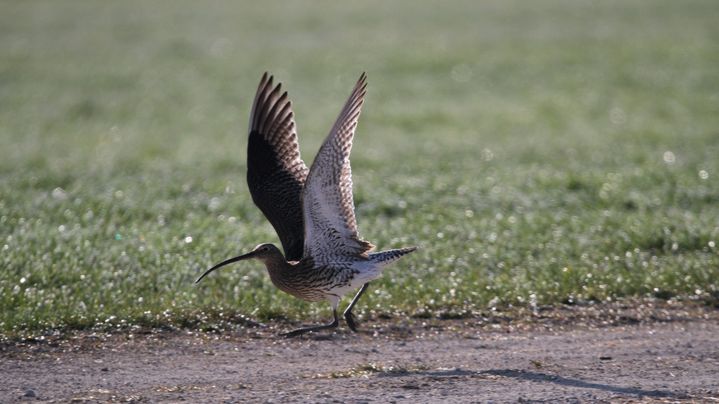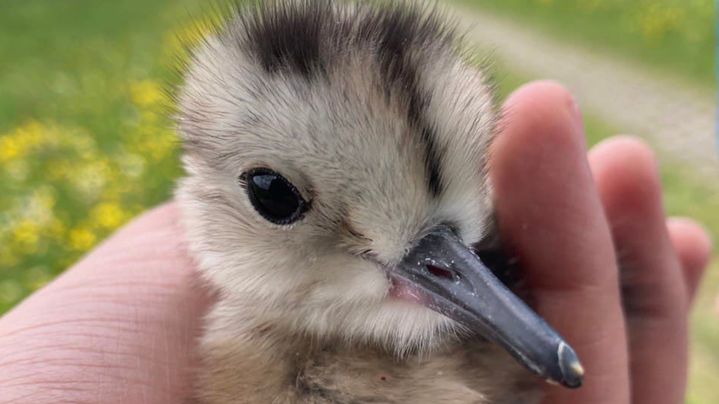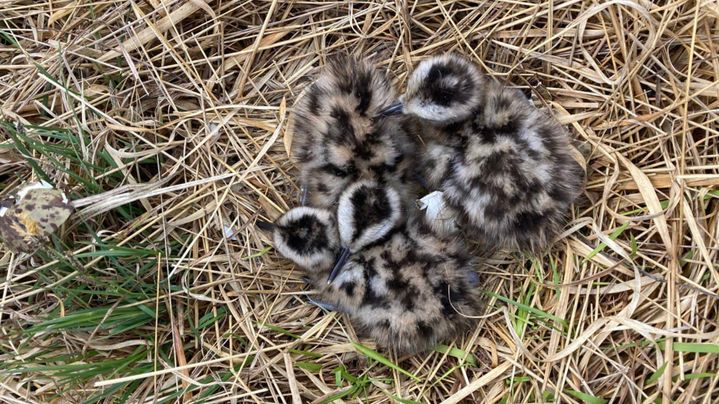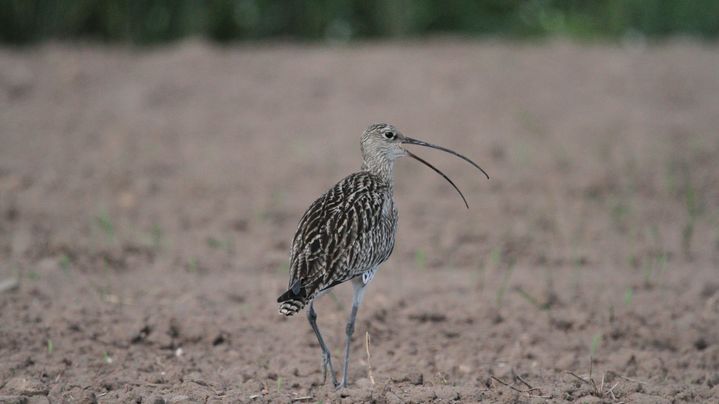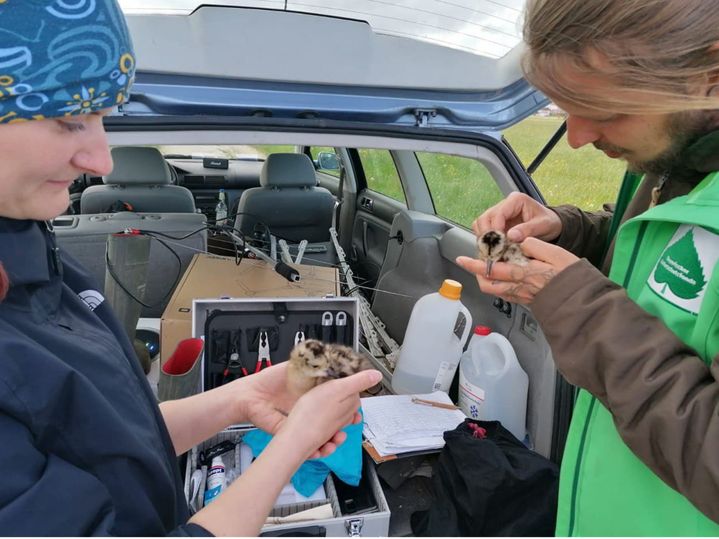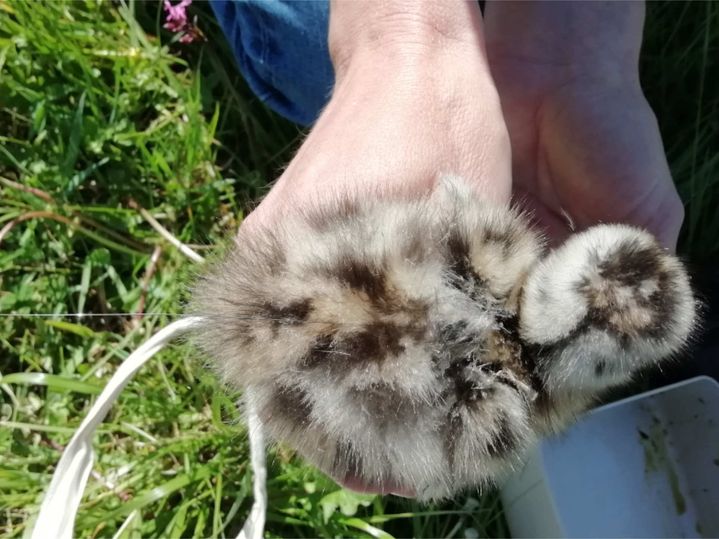Using telemetry technology to protect the curlew
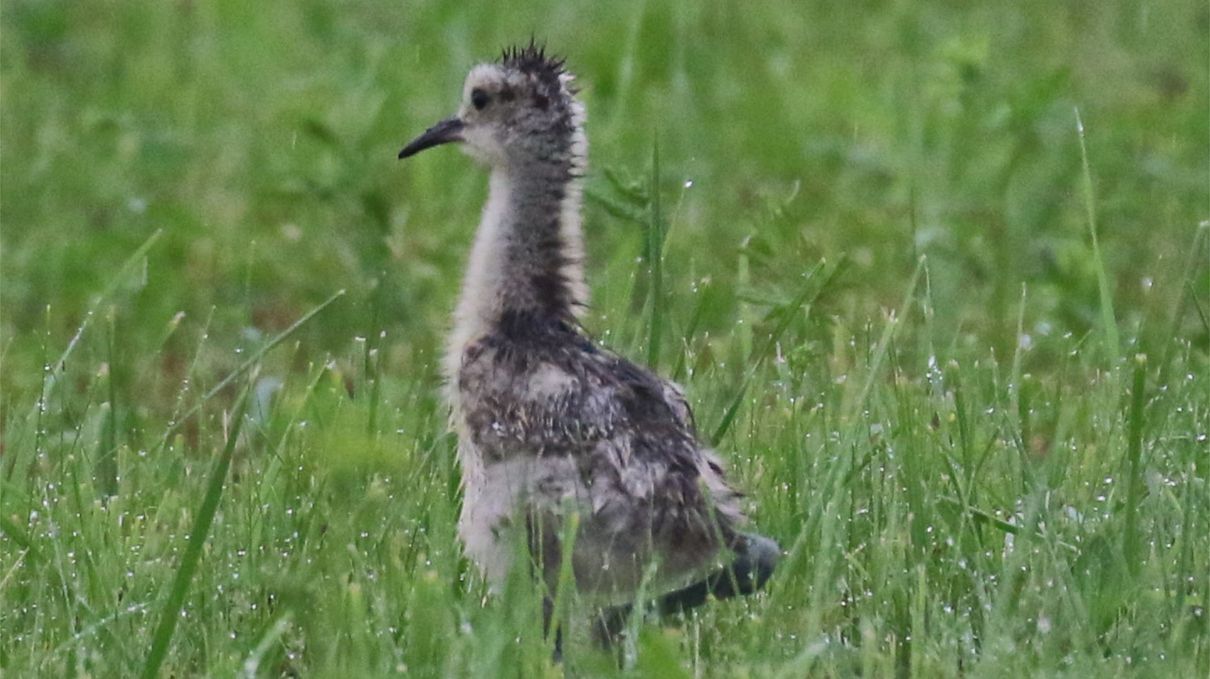
The curlew: threatened with extinction
The curlew is the largest representative of the waders in Europe. Characteristic is its long, curved beak, with which it can pick up small animals such as snails and earthworms from the ground and poke for them in holes or between stones. Originally it breeds in moors, dunes, wet meadows and on poorly disturbed pastures. It is a ground breeder that builds its nest in hollows padded out with plant material. In Germany due to increasing habitat loss, it is one of the species threatened with extinction. Intensive use of grassland, drainage and predation by ground robbers are the main causes that have been documented so far.
LBV localizes curlew chicks
Also in Bavaria its population with about 500 breeding pairs is highly endangered. That is why years ago the LBV took initiative to protect the curlew population. A project has been running in the Altmühltal since 2019, where juvenile curlews are equipped with radio telemetry transmitters in order to gain better knowledge about their whereabouts and the behavior of the bird families in the field.
With the help of the transmitter, protective measures that had already been initiated lead to a positive effect and, for the first time since 2008, a stock-preserving breeding success has been achieved. In cooperation with the farmers, the mowing of meadows where curlew chicks are currently staying will be postponed and young curlews are located shortly before they fledge so that they can be equipped with GPS transmitters for further observation.
Use of the new telemetry system
In cooperation with the University of Marburg (LOEWE focus on Nature 4.0), research is being carried out on a further technical development compared to the previously used mobile receiving antennas. Stationary receivers are being tested in the field enabling a live transmission of the recorded transmitter data, which means that the location can be determined with less interference. In addition, activity patterns can be derived from the received data and any transmitter losses or deaths can be determined immediately. The Audi Environmental Foundation is helping to finance three receiving stations for this innovative location technology. Eight curlew families are monitored in a test run.
The advantage of the stationary system compared to the hand-held antenna are enormous time savings, less personnel requirements and a significantly higher level and number of data. If the system works as expected, other meadow breeding areas will also be interested in this telemetry technology, as there is a lack of personnel capacities for hand telemetry everywhere. Therefore the “Deutsche Rat für Vogelschutz” (DRV) (German Council for Bird Protection) has decided to support the pilot project. Most meadow breeder species are on the Red List in Category 1 (critically endangered), so that the DRV is interested in promising new developments to improve protection options.
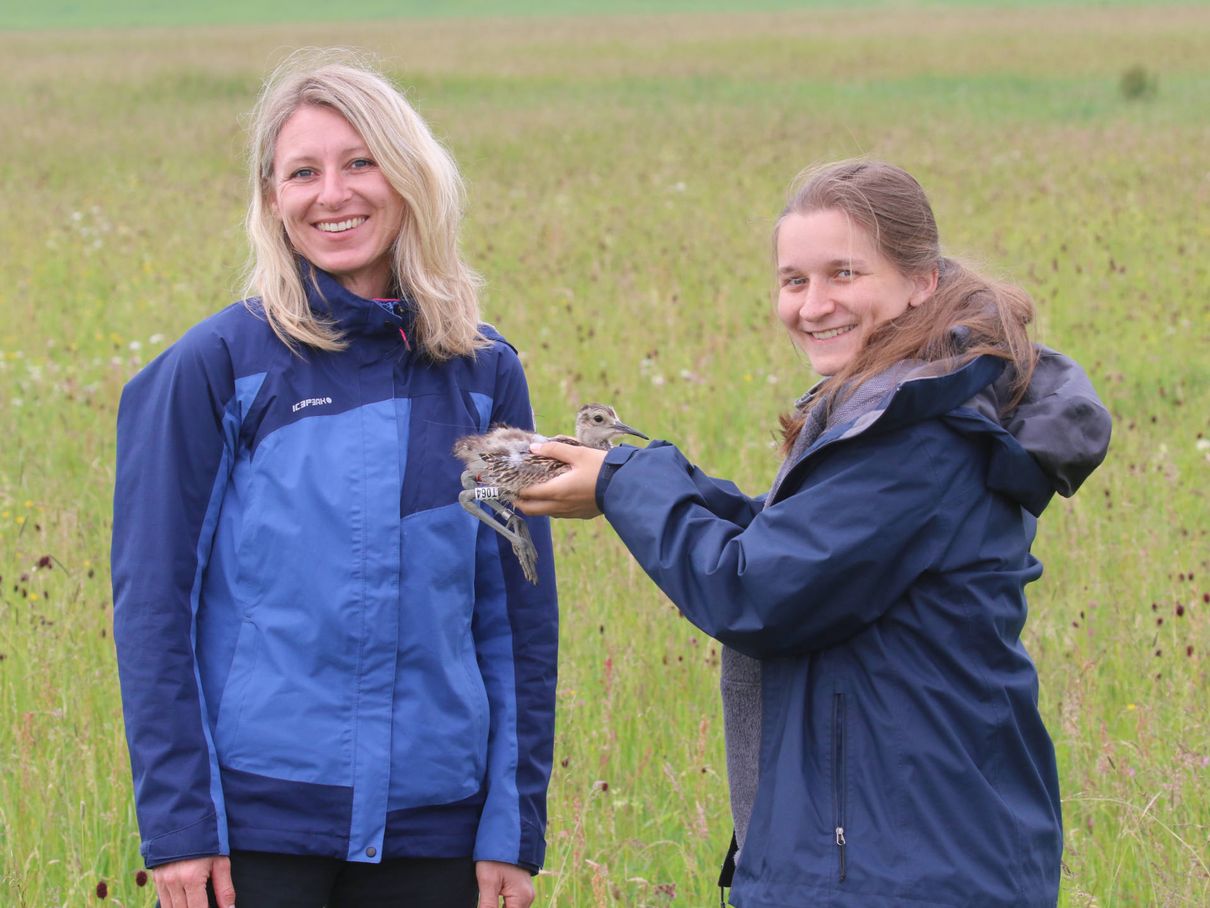
Successful use of the telemetry system
The result of this season is that the use of stationary telemetry has proven to be extremely helpful and effective. A comparison of the data obtained from the stationary transmitters on the whereabouts of the chicks with the points of the hand telemetry showed that the results of the stationary telemetry correspond to those of the hand telemetry, which means that the method works.
The new telemetry system with stationary antennas records the signals of the chicks several times a minute and increases the accuracy of the measurements compared to the complex, labor-intensive handheld telemetry. The determination of the whereabouts and sleeping places of the chicks could thus be improved. Detected gaps in reception because of weak signals are due to the moisture in the meadows, especially at night and in the early morning, and to insufficient strength of the transmitters. Despite considerable losses in the breeding season 2021, due to the weather and predators, some chicks have survived and the immigration of another curlew family with chicks into the research area was also observed.
Since the new, stationary system works successfully in principle, this method could also be used in other meadow breeding areas - if necessary, with a few technical adjustments.
